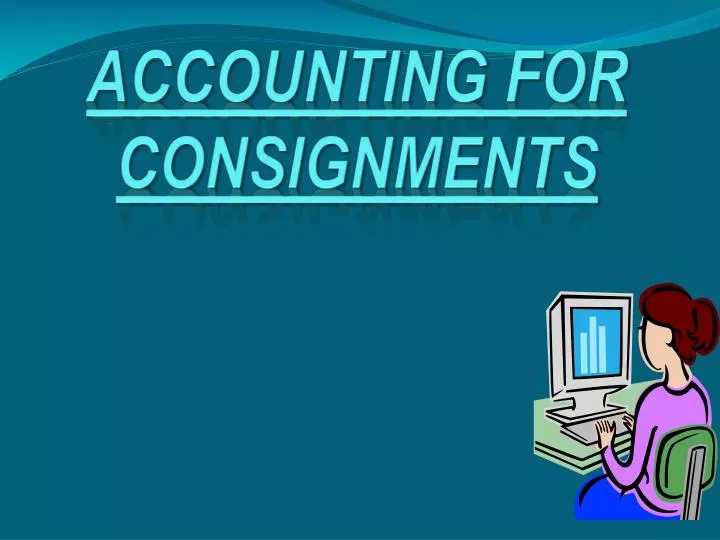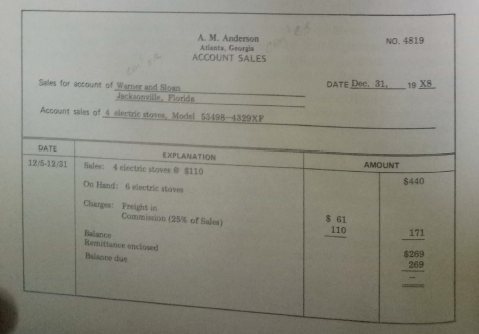Relationship − The relation between a seller and a buyer will be of debtor and creditor in case where goods are sold on credit basis. On the other hand, the relationship between a consignor and a consignee is that of principal and agent. On Consignee in Accounting the consignment of the goods, the consignor also sends a Performa invoice. When the consignee remits money, he sends Account sale to the consignor. The relationship between consignor and consignee is that of the principal and the agent.
When a shipper ships a package to an unauthorized consignee, and; in the event of non-payment by the consignee or third party — the original shipper will be billed a refusal fee per package in addition to the original shipping charges. The bill of lading is a legally binding document that provides the carrier and shipper with all of the necessary details to accurately process a shipment. First, it is a document of title to the goods described in the bill of lading. Finally, the bill of lading represents the agreed terms and conditions for the transportation of the goods. Consignment is a business arrangement between a consignor (owner) and a third party (consignee).
Paying Out Consignors In Bulk
7.39 Thus, the court is willing in appropriate circumstances to look behind the terms of the bill of lading for the terms of the contract, at least where the issue is between the carrier and the original counterparty to the contract, typically the shipper. Where the bill is “filled in” and Consignee in Accounting tendered for signature by or on behalf of the shipper it will thus be difficult for him to deny assent to its terms. 7.13 One issue that arises in relation to the difference between the bill of lading “contract” and the antecedent contracts is as to quantity shipped, carried and delivered.
Use ‘Consignor’ In A Sentence
What does consignee to order mean?
A consignee is a UPS customer who has agreed to pay your shipping charges. This payment method allows you to bill the charges for a specified shipment to a designated consignee.
Who bears what risk is also the basis of various INCOTERMS defined by the International Chamber of Commerce. A straight bill of lading by land or sea, or air waybill are not documents of title to the goods they represent. They do no more than require delivery of the goods to the named consignee and (subject to the shipper’s ability to redirect the goods) to no other. This differs from an « order » or « bearer » bill of lading which are possessory title documents and negotiable, i.e. they can be endorsed and so transfer the right to take delivery to the last endorsee.

Contract Concluded After Issue Of The Bill
The singapore company can easily give his buyer’s name as the consignee. As you must be aware that for the goods to be released at POD, the consignee need to endorse the Bill of lading and present it to carrier. So in this case the bill of lading need to travel from port of loading to Singapore and then Singapore to POD in India. If you paid the shipping company (carrier) directly and have a contract with them, yes you are the shipper.
Parties In Consignment Account
It is important to remember up front, that a shipment is automatically assumed pre-paid unless marked as collect. When the BOL for a shipment is marked as collect, and Section 7 is signed by the shipper that signifies that if the consignee does not pay the freight charges, the carrier cannot go back to the shipper for payment.

In simple words, notify party is a person or company to whom carrier is supposed to notify of the arrival of consignment. Many believe “Shipper” is the supplier or owner of the goods being supplied. The business directory defines shipper as the party responsible for the https://accounting-services.net/ shipment. When a buyer of goods enters into a contract with seller of the goods through sale contract, apart from other things they also decide who would arrange for the transport. In the multi-modal transport, they may decide which leg of transport is under whom.
- Why ABC is paying to seller, what actually buyer of the goods is supposed to pay ?
- ABC is nowhere in the picture both in seller/buyer agreement and in contract of carriage.
- Role of ABC looks more of a bank of XYZ who is making payments to the seller of the goods and they have no role in contract of carriage for which these terms are related.
- Role of ABC is a related to finance in the seller/buyer agreement.
Who Issues A Bill Of Lading?

Ownership (title) of the goods remains with the consignor until the consignee pays for them in full. If a shipment with a consignee https://accounting-services.net/consignee/ column « To order » but has no name of a person or a bank/a company, then what kind of BL is it and the consignment belongs to who?
The U.S. position is that the person taking delivery must prove his or her identity but, as in Hong Kong, there is no need to present the bill itself. In a contract of carriage, the consignee is the entity who is financially responsible (the buyer) for the receipt of a shipment. Generally, but not always, the consignee is the same as the receiver. Statement showing the details of goods received, goods sold, expenses incurred, commission charged, remittances made, and due balance is called Account Sale and it is remitted by the consignee to the consignor of goods on a periodic basis.

Here at LTX Solutions, we deal with all types of BOL’s, depending on our customer’s preferences and needs. Where the contractual carrier is the shipowner, arrest of the ship will often provide security for a cargo claim. Proceeding against charterers who may have no assets or not be amenable to convenient jurisdictions is frequently problematic. A contract between X as shipper and Y as carrier involves not only Y’s assent to contract as carrier (or grant of authority by Y to an agent to contract on his behalf), but also the agreement of X to contract with Y.
If the transport document concerned is a non-negotiable sea waybill, the shipper’s right to re-direct or to name another consignee is always exercisable before delivery of the shipment to the original consignee. The original waybill need not be returned to you, nor can the shipper just « endorse » the document to the alternative consignee. At the very least, the shipper must Consignee in Accounting notify the carriers, and confirm the information in writing. Without such notice of change, the carrier would be entirely within his rights to deliver the cargo to the consignee named on the waybill. Person or firm (usually the seller) who delivers a consignment to a carrier for transporting it to a consignee (usually the buyer) named in the transportation documents.
What is the benefit of consignee?
The consignee is the party to whom ownership of the goods will transfer when the cargo is released at the destination. A consignee must be named on a bill of lading.
In this article, we discuss about the terms To Order, To the Order, To the Order of xxx Bank, To the order of Bank etc. used in Bill of Lading and Airway bill. I will also explain about the endorsement Consignee in Accounting procedures and delivery order formalities at destination port under a shipment where consignee column mentioned as To Order, To the Order, To the Order of xxx Bank or To the order of Bank.
